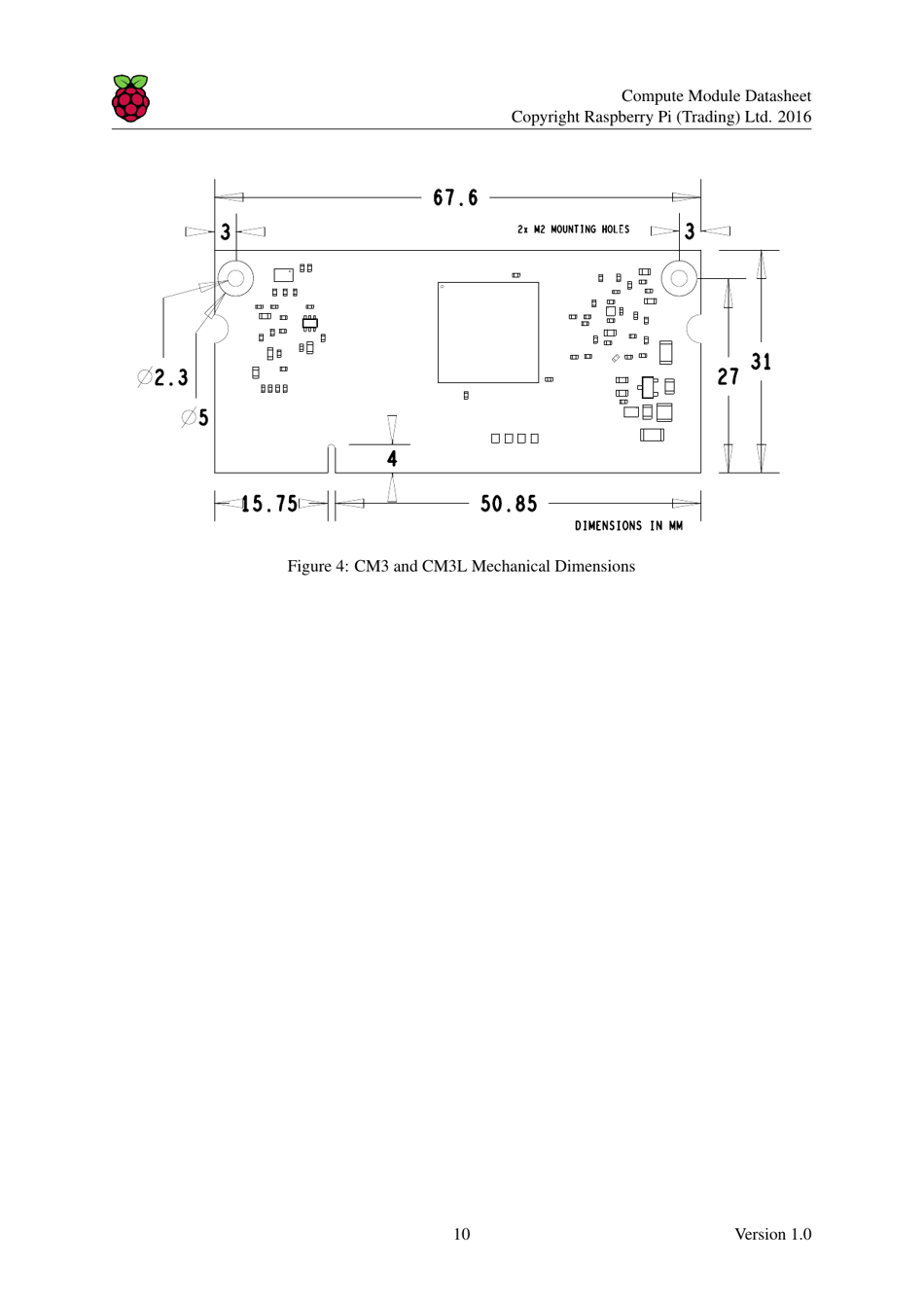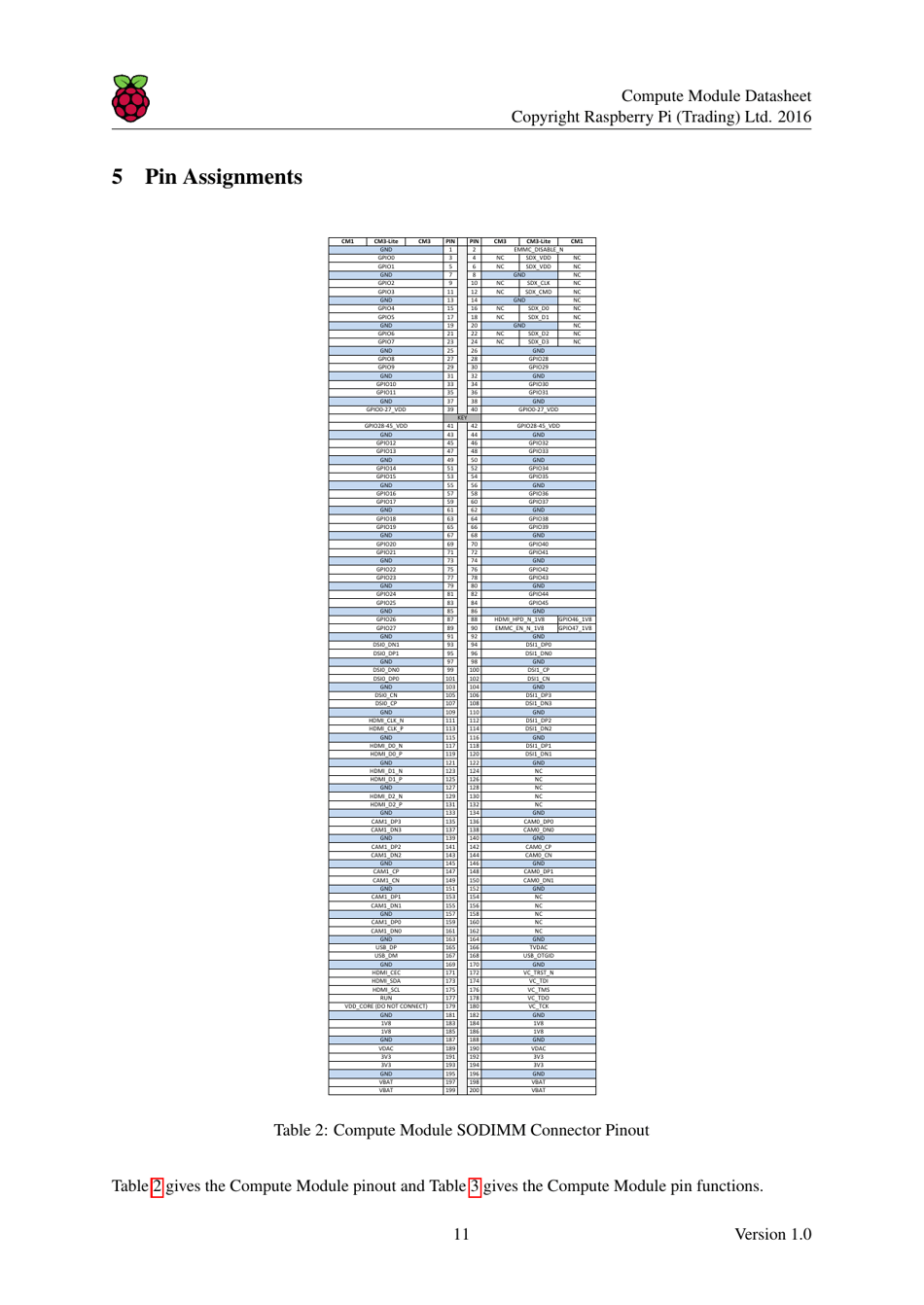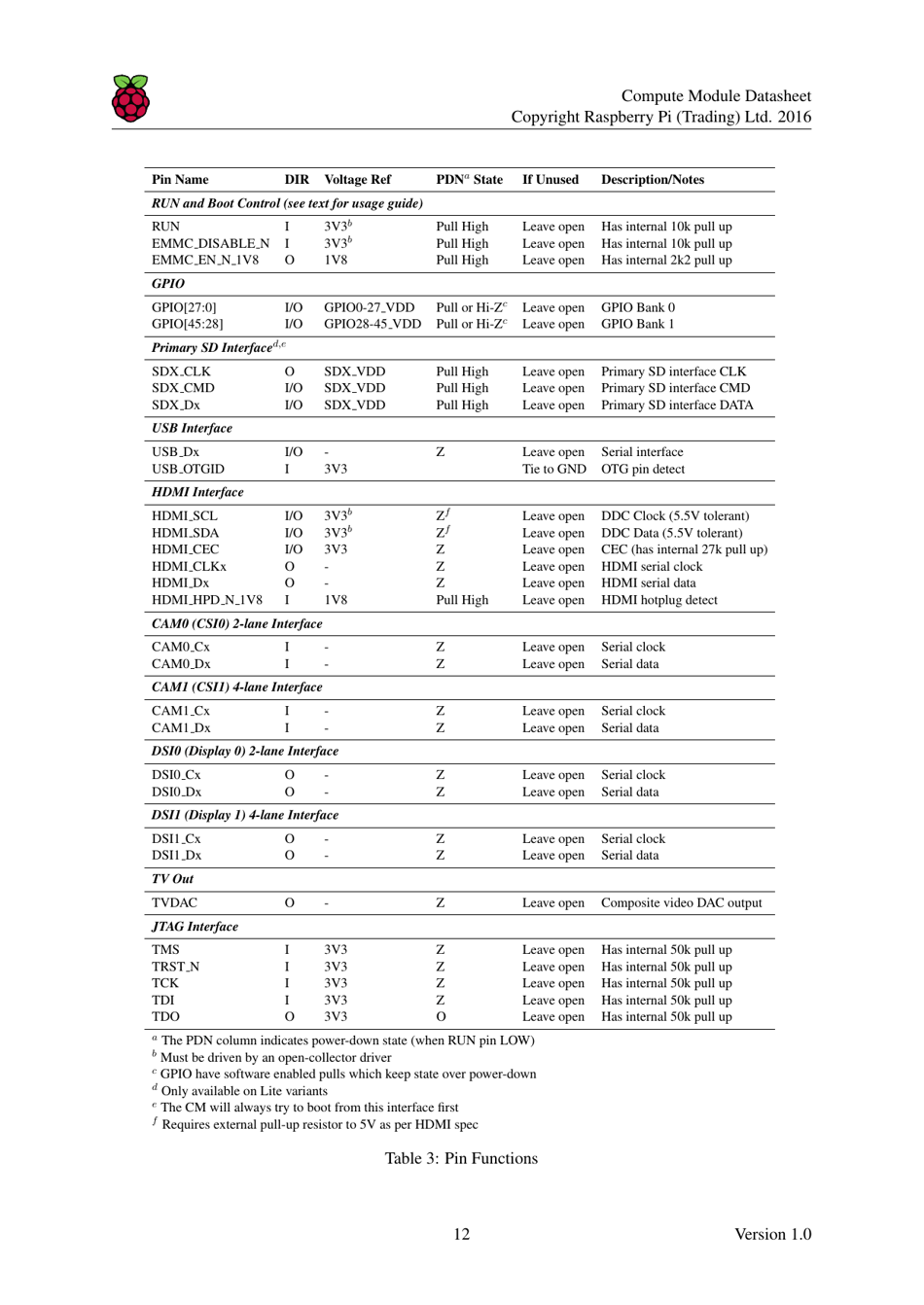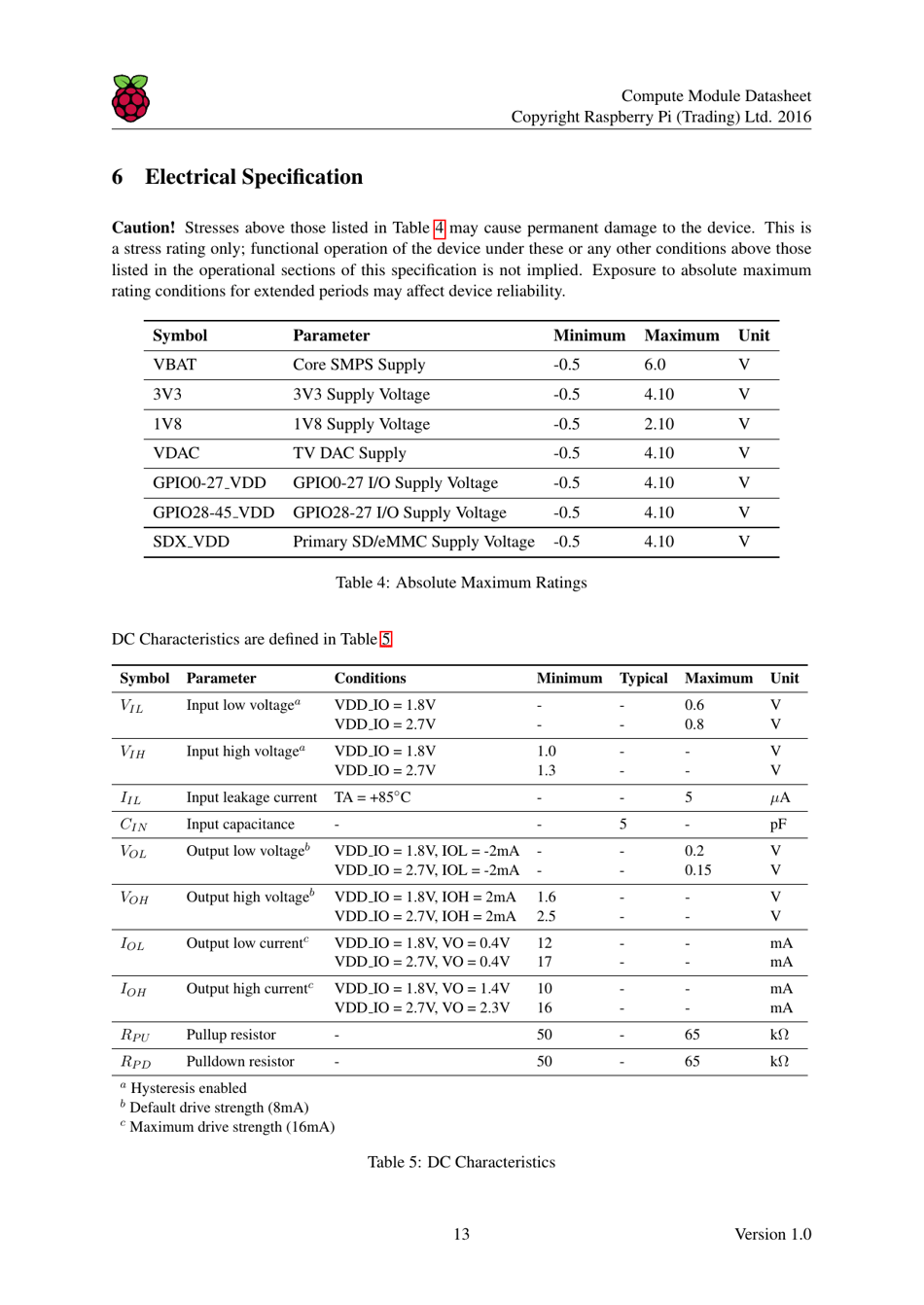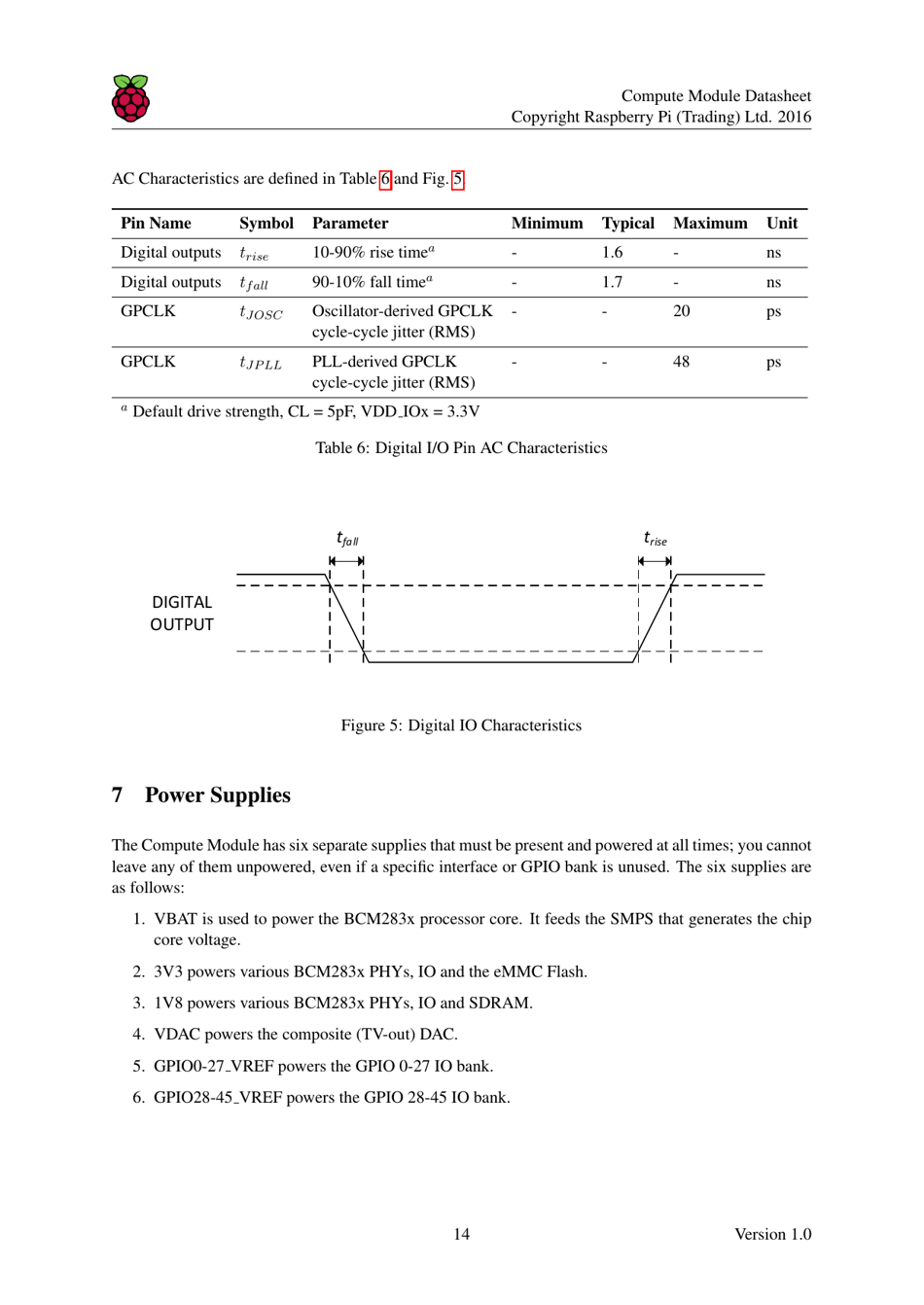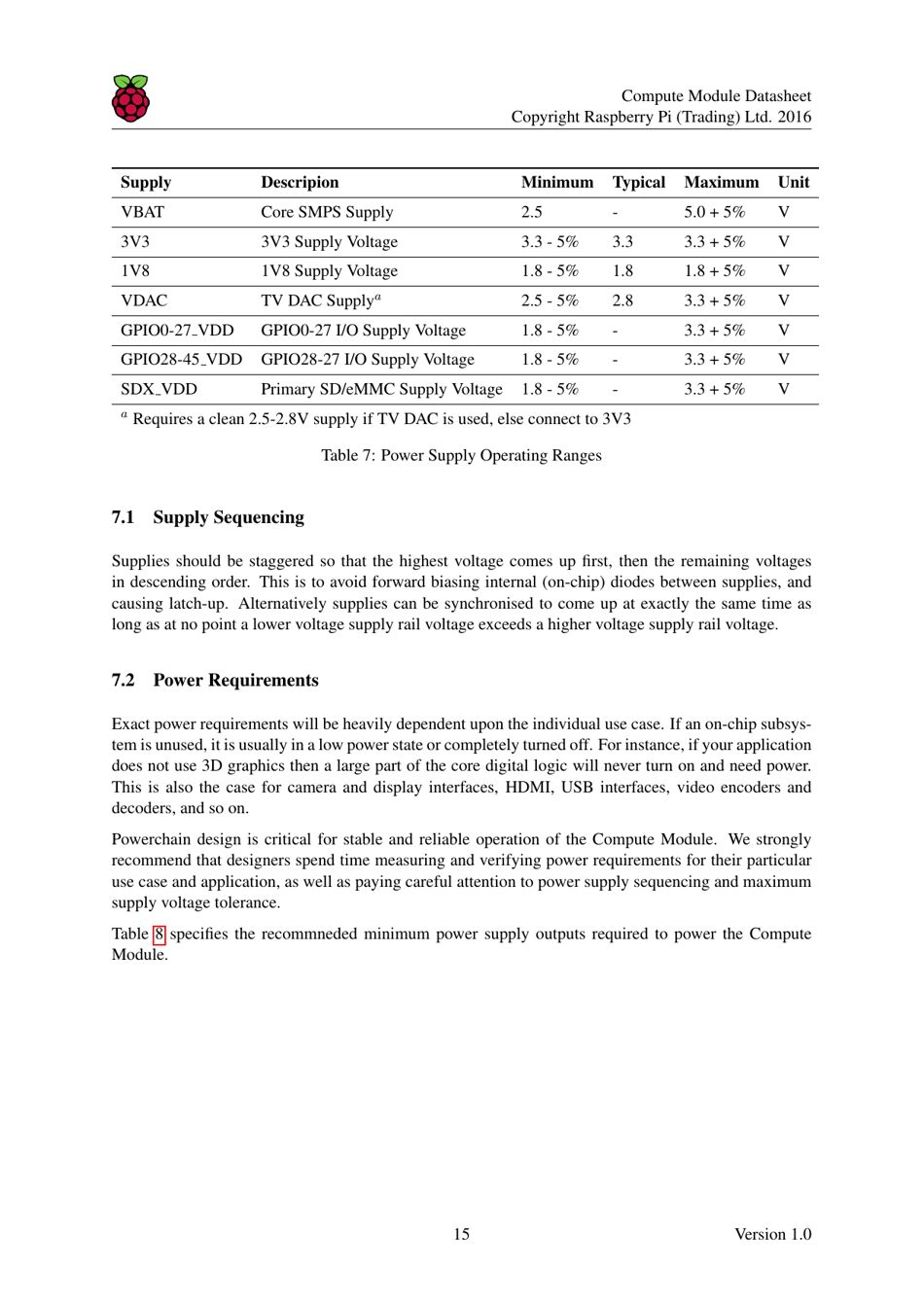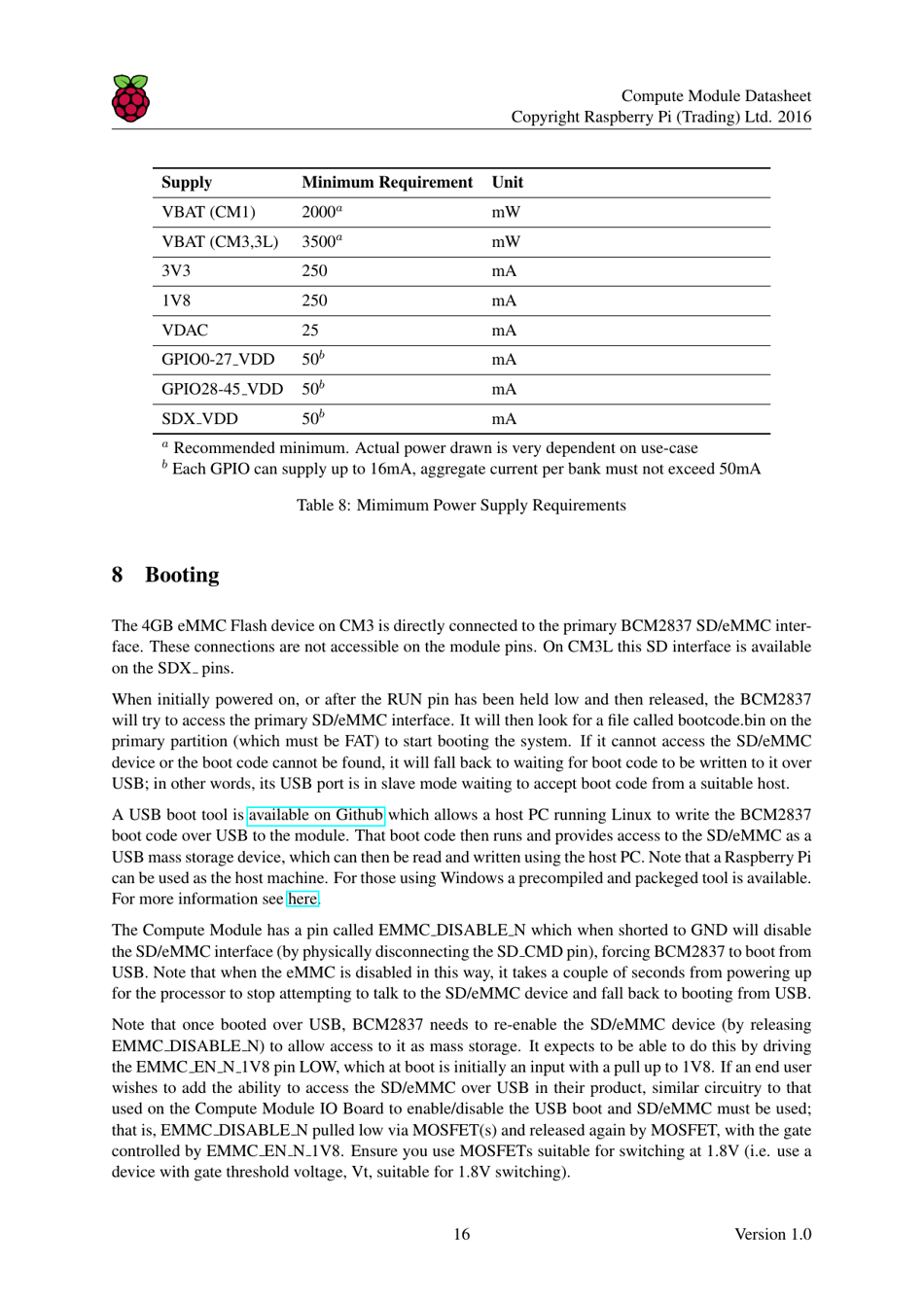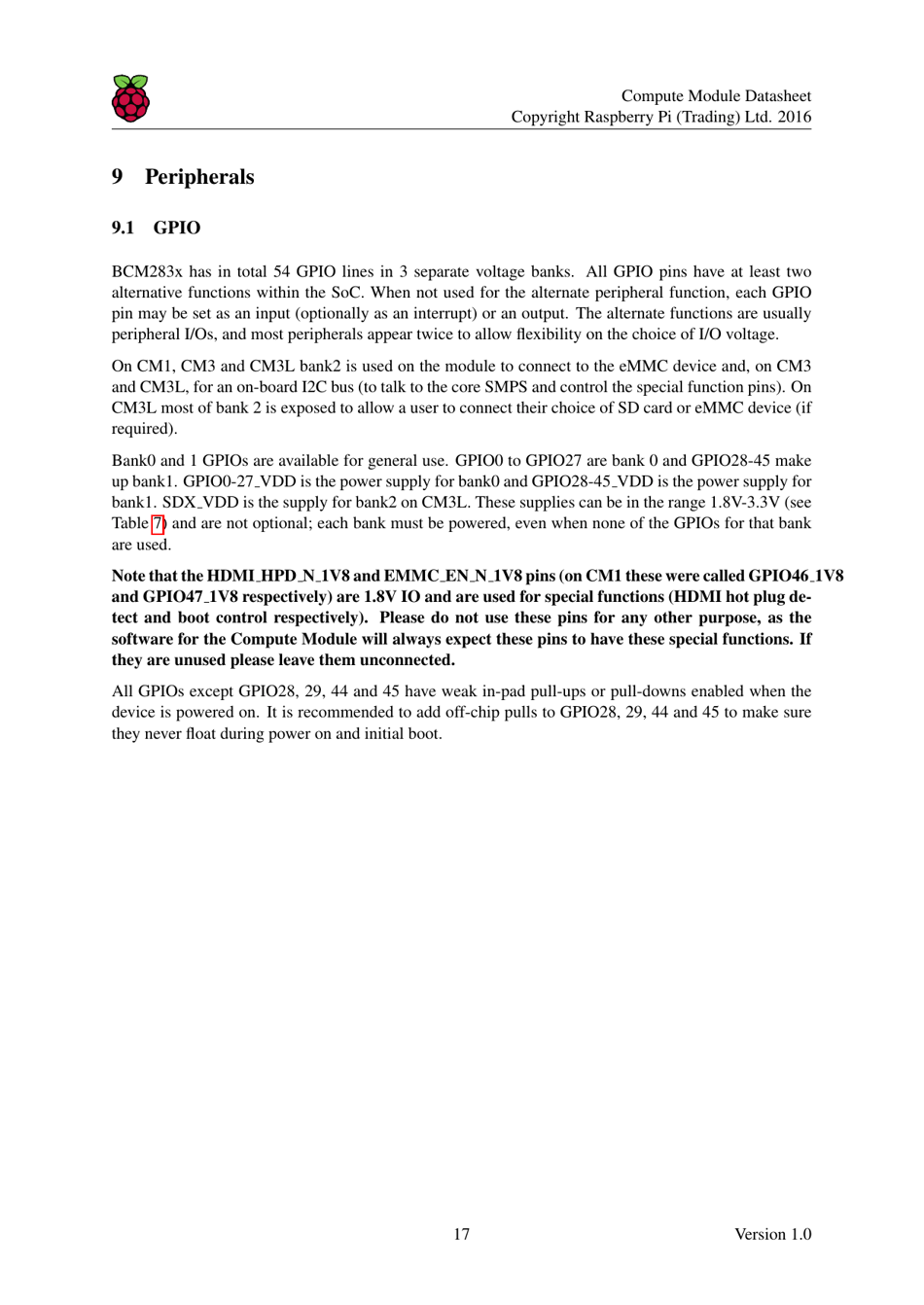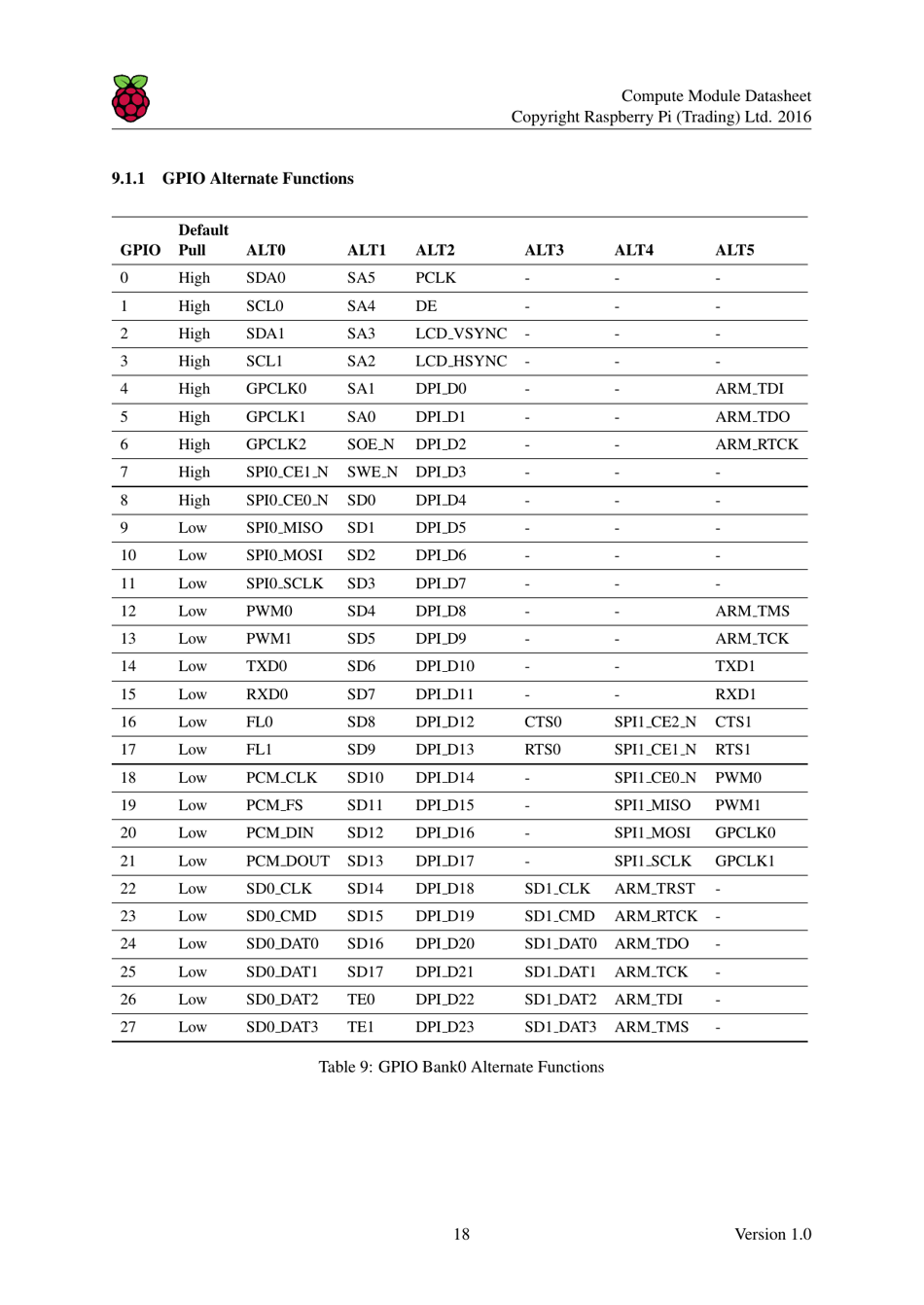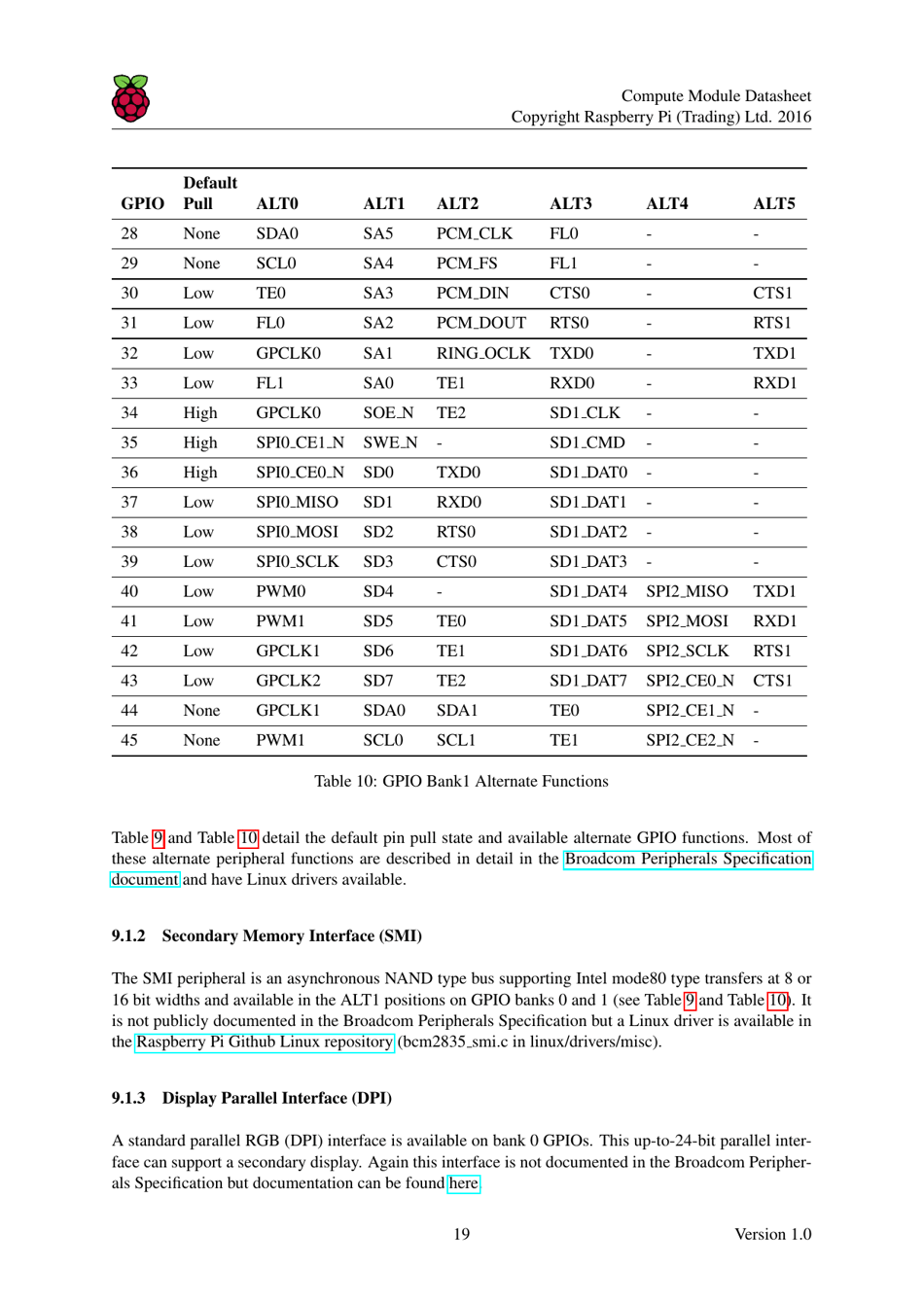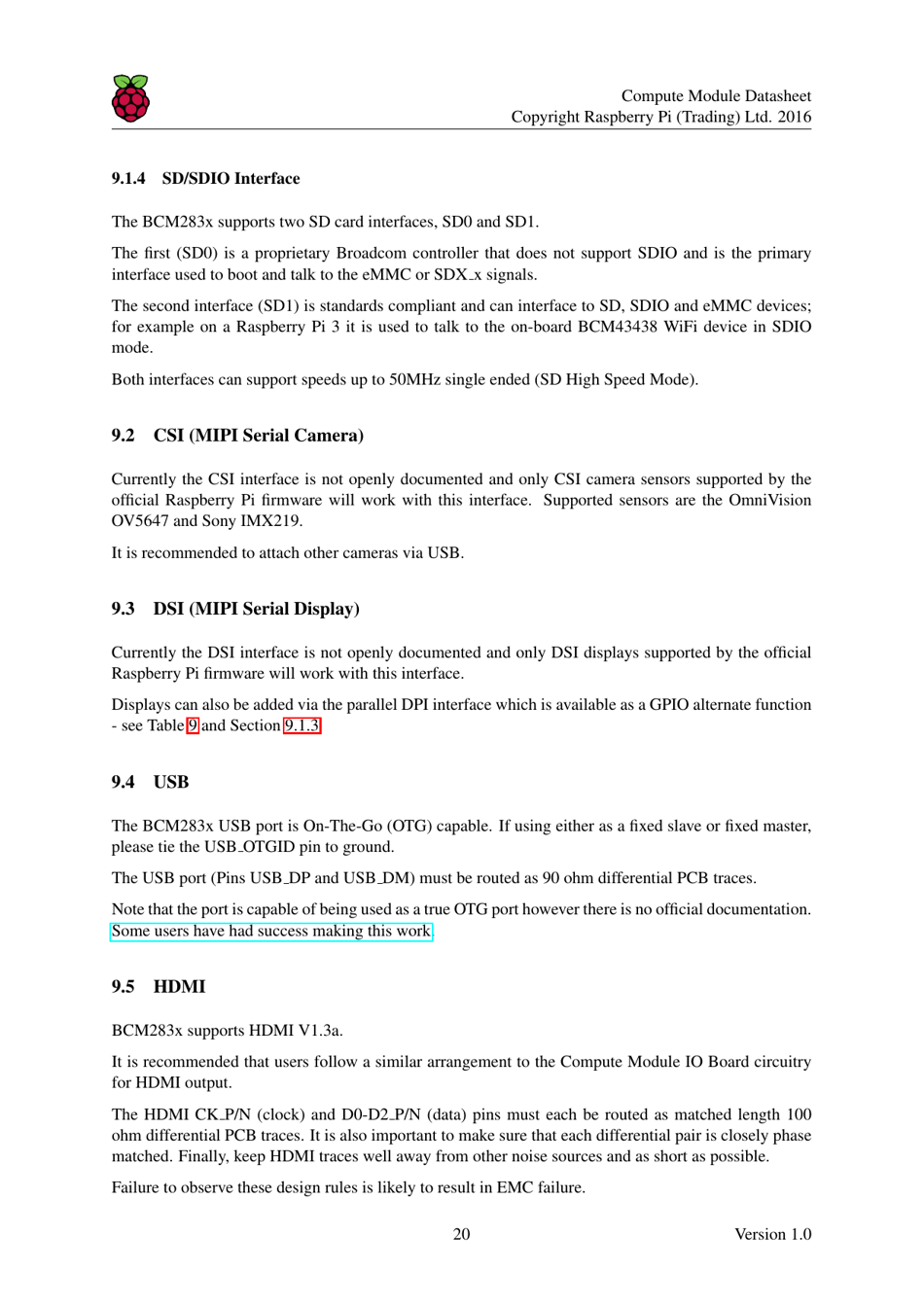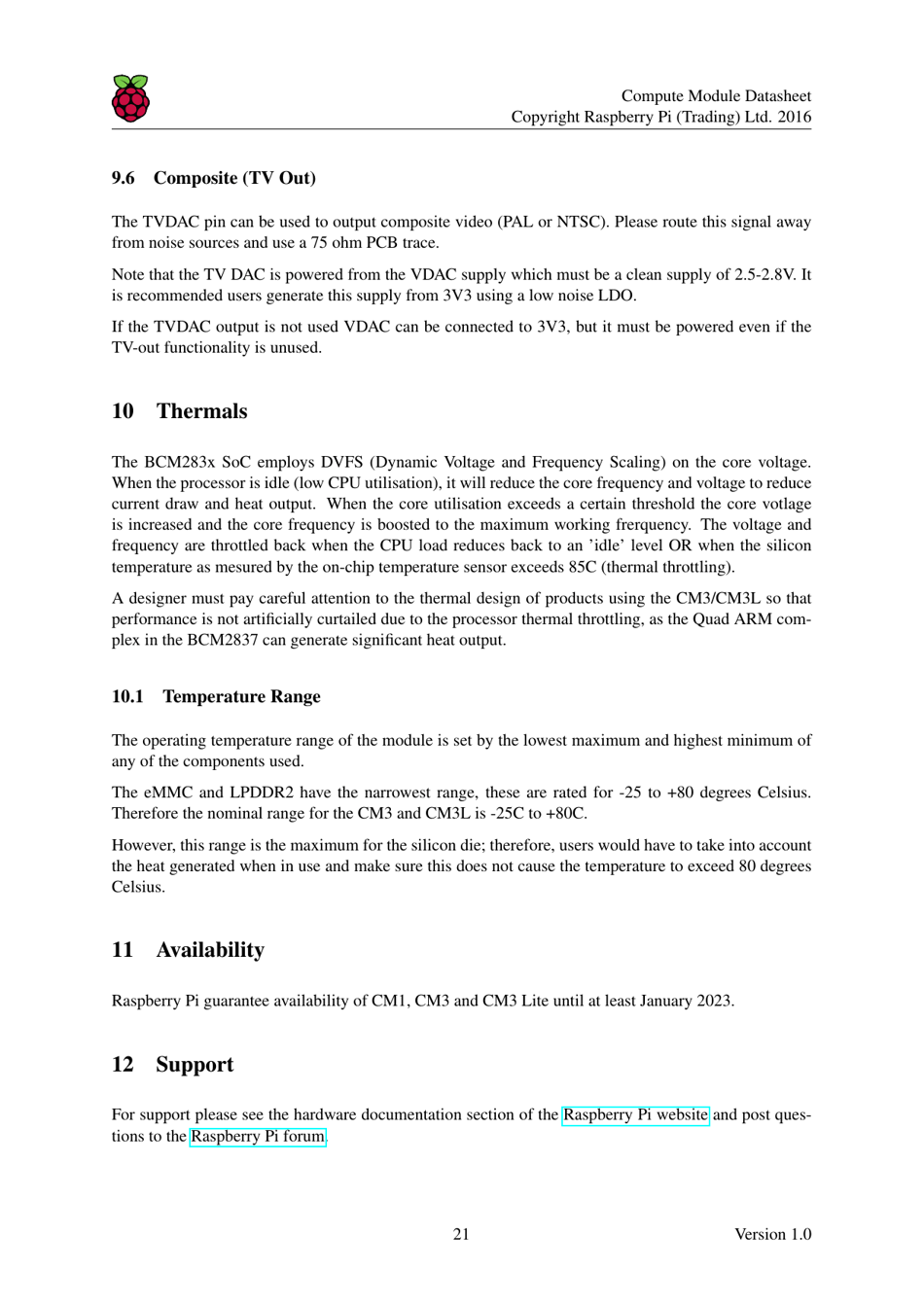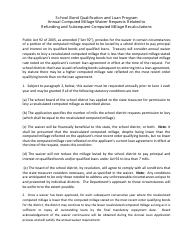Datasheet Raspberry Pi Compute Module (Cm1), Compute Module 3 (Cm3) and Compute Module 3 Lite (Cm3l)
The Datasheet for Raspberry Pi Compute Module (CM1), Compute Module 3 (CM3), and Compute Module 3 Lite (CM3L) provides detailed technical specifications and information about these computer modules. They are designed for embedded systems or custom-built devices where a compact, modular, and flexible computing solution is needed.
The datasheets for Raspberry Pi Compute Module (Cm1), Compute Module 3 (Cm3), and Compute Module 3 Lite (Cm3l) are filed by the Raspberry Pi Foundation.
FAQ
Q: What is Raspberry Pi Compute Module?
A: Raspberry Pi Compute Module is a compact version of the Raspberry Pi single-board computer designed for industrial use.
Q: What are the differences between Compute Module 1 (CM1), Compute Module 3 (CM3), and Compute Module 3 Lite (CM3L)?
A: Compute Module 1 (CM1) is based on the first-generation Raspberry Pi, while Compute Module 3 (CM3) and Compute Module 3 Lite (CM3L) are based on Raspberry Pi 3.
Q: What is the purpose of Compute Module?
A: The purpose of Compute Module is to provide a flexible platform for manufacturers to create customized embedded systems or products.
Q: What are the main features of Compute Module 3?
A: Compute Module 3 features a quad-core processor, 1GB of RAM, 4GB eMMC flash storage, and the ability to run a full range of operating systems including Linux and Windows 10 IoT Core.
Q: What is the difference between Compute Module 3 and Compute Module 3 Lite?
A: Compute Module 3 (CM3) includes built-in eMMC flash storage, while Compute Module 3 Lite (CM3L) does not. CM3L requires an external SD card for the storage.
Q: Can I use Compute Module for personal projects?
A: Compute Module is primarily designed for industrial use, but it can also be used for personal projects if you require the additional flexibility and features it offers.
Q: What kind of applications is Compute Module suitable for?
A: Compute Module is suitable for various applications such as robotics, automation, industrial control systems, smart home devices, and more.

































